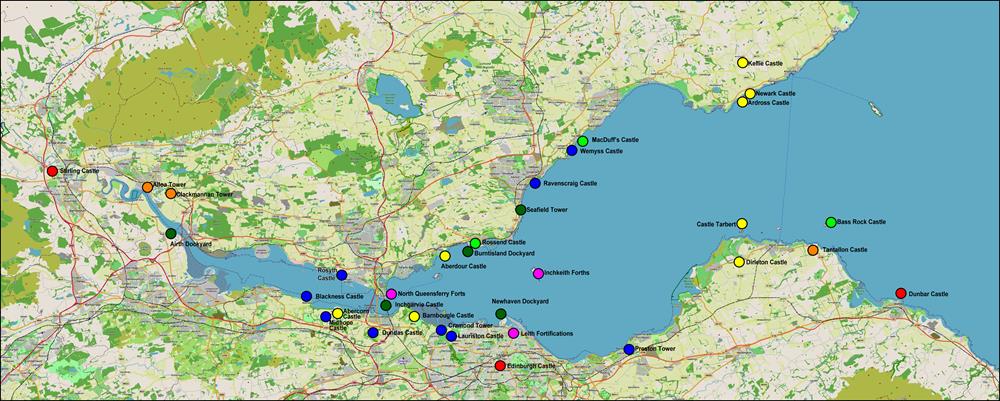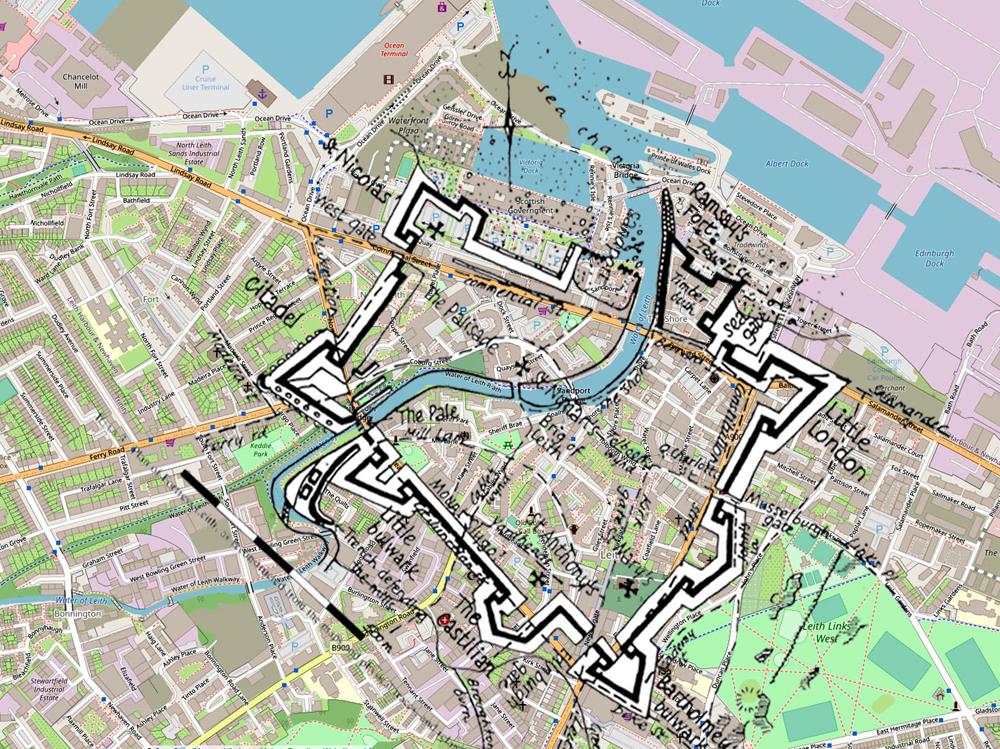Ancient Forth Defences 12 – The Rough Wooing 1543 to 1551
| < 11 – Disaster at Flodden 1509 – 1542 | Δ Index | 13 – Dynastic convolutions and convulsions 1553 to 1650 > |
When James V died after the battle of Solway Moss, his six-days-old daughter became the monarch – Mary Queen of Scots.
Henry VIII promptly invaded Scotland to force a marriage agreement between Mary and his infant son Edward, and so claim the Scottish crown for England. The resulting 9 years’ war became known as the Rough Wooing.
When Henry died in 1547 the war was continued on behalf of his son King Edward I, now age 9, by his regent Edward Seymour 1st Duke of Somerset.
Several Tower Houses and Castles were attacked by in these wars.
Bass Rock Castle was attacked unsuccessfully.
Dunbar Castle was damaged
Rossend Castle surrendered.
Blackness Castle was blockaded
The original Lauriston Castle was destroyed
Preston Tower was damaged
Inchgarvie Castle was attacked
Matters were proving difficult, so the Scottish court asked France for assistance under the terms of the Auld Alliance.
The price of this help was the signing of a marriage agreement between Mary and Francis – the three-year-old son of King Henry II of France. In 1548, five year-old Mary was sent to safety in France, and the first of 8,000 French troops arrived in Scotland.
They built vast Fortifications in Leith and on Inchkeith and were garrisoned in Dunbar Castle, Haddington and Broughty Castle on the Tay.
 Fortifications at Leith and Inchkeith
Fortifications at Leith and Inchkeith
 Leith Fortifications – 1550
Leith Fortifications – 1550
| < 11 – Disaster at Flodden 1509 – 1542 | Δ Index | 13 – Dynastic convolutions and convulsions 1553 to 1650 > |